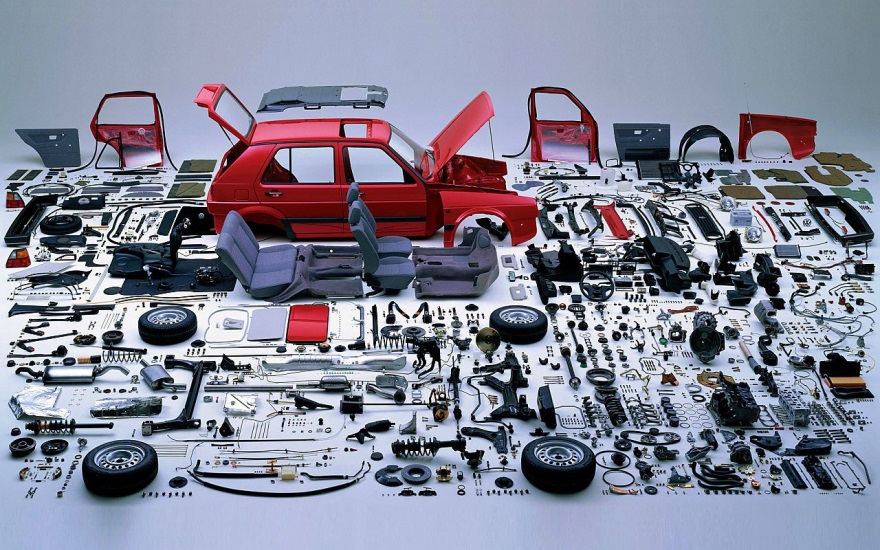
Alternator Repair In Vista – Parts Are Parts, Right?
Let’s say that you need your alternator repaired or replaced at our Vista CA shop, parts are parts, right? Well, maybe in chicken nuggets, but not when the subject is replacement auto parts, in this case, your alternator. Whether you service your own car or have a facility like Golden Wrench Automotive do the work, you can sometimes be faced with a confusing array of part alternatives. In general, you get what you pay for, but that doesn’t mean a more expensive part is always the best choice. To help you make good choices, Golden Wrench Automotive offers the following tips and information.
New Parts
Most of the time new parts, like alternators, are used to replace worn-out or broken components. These come from a variety of sources including new-car dealers who offer original equipment (OE) parts manufactured by automakers, their subsidiaries or outside suppliers. These parts tend to be more expensive.
The other major source of new parts is quality aftermarket manufacturers whose products meet or exceed OE specifications. These are typically sold at independent repair facilities and auto parts stores. Many of these manufacturers also make OE parts; the only difference in the aftermarket version is branding and cost, which is usually a little less.
While cost can be an indicator of part quality, many common name-brand replacement parts such as filters, wiper blades, light bulbs, belts and hoses are the same no matter where you get them. If you work on your own car, price shopping these parts makes sense and can save you money.
Many replacement auto parts are offered at good, better, and best price points. The differences involve whether the part is new or rebuilt (see the next section), and the length of the warranty. If you plan to keep your car for a long time, a top-quality part can be a good investment. However, if cost is critical or you plan to sell or trade in the car soon, a good quality part will do the job.
Two things to watch out for are parts from off-brand or no-name suppliers, and “counterfeit” parts packaged to resemble an OE or name-brand aftermarket component. Often sold online or at flea markets, there is no way to determine the quality of these parts and a failure could result in vehicle damage or even a crash. Stick with reputable parts suppliers to protect yourself and your vehicle.
Rebuilt or Remanufactured Parts
Many worn-out vehicle parts are routinely replaced with rebuilt or remanufactured units. Examples include starters, alternators, air conditioning compressors, steering racks, drive axles, brake calipers, and even engines and transmissions. Rebuilt parts can save you 20 to 50 percent on the cost of auto repairs, and are often a good repair option.
Rebuilt or remanufactured parts are completely disassembled and each component is either restored to factory specifications or replaced with a new part. After reassembly, the unit is bench tested to ensure proper performance. The Federal Trade Commission requires that parts remanufactured in this manner be labeled “rebuilt” so consumers will not mistake them for new parts. The “rebuilt” label also protects you against getting a lesser-quality refurbished or reconditioned part.
The terms “refurbished” and “reconditioned” refer to parts that have been disassembled and repaired only to the extent necessary to make them work. Quality repair facilities seldom perform such work or install these types of parts because it is not cost-effective and the results cannot be guaranteed. Rare exceptions include collector or classic cars where new or rebuilt components are not available. Also, some vehicle owners perform such repairs themselves when the cost is an overriding concern.
Recycled Or Salvage Parts
Recycled or salvaged parts come from vehicles no longer in service, usually due to a collision. Recycled parts can be an attractive option when new OE or aftermarket replacement units are prohibitively expensive. However, some repair facilities are reluctant or unwilling to install recycled parts due to durability and other concerns.
Owners of older vehicles who do their own work often use recycled parts to save money and keep their cars on the road. In addition, certain components such as interior and exterior trim pieces quickly become hard to find once a model goes out of production. In these situations, recycled parts from salvage yards, swap meets or online resellers may be the only option for obtaining a replacement.
Care must be exercised when purchasing salvage parts to ensure they properly match the originals. Parts from newer models with lower mileage are preferable, and recycled mechanical components that wear in normal operation can be expected to have shorter service lives than new or rebuilt parts.
Part Warranties
Part warranties can vary from as little as 90 days/3,000 miles (whichever comes first) to “lifetime” coverage for the original purchaser. New and rebuilt parts purchased at and installed by a dealer or independent repair facility typically have at least a 12-month/12,000-mile warranty. If the part fails within that period, it will typically be replaced at no charge by the installing facility or another facility that is part of the same dealer network or repair chain. Warranties on recycled parts tend to be shorter in duration, are limited to supplying another salvaged unit, and do not cover replacement labor costs.
Summary
Choosing replacement auto parts really comes down to three factors: type (new, rebuilt, or recycled), cost, and warranty, with each selection having an impact on the other two. We hope you find the information in this article helpful in choosing the parts that best meet your unique needs. Give Golden Wrench Automotive a call today at (760)940-6060 to discuss how we can help you with any of your auto repair needs.


